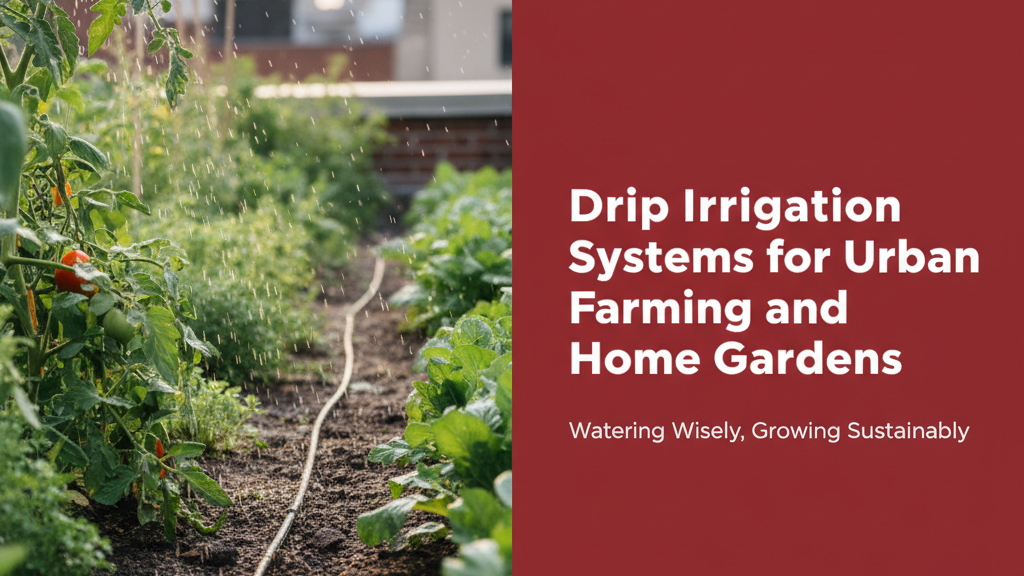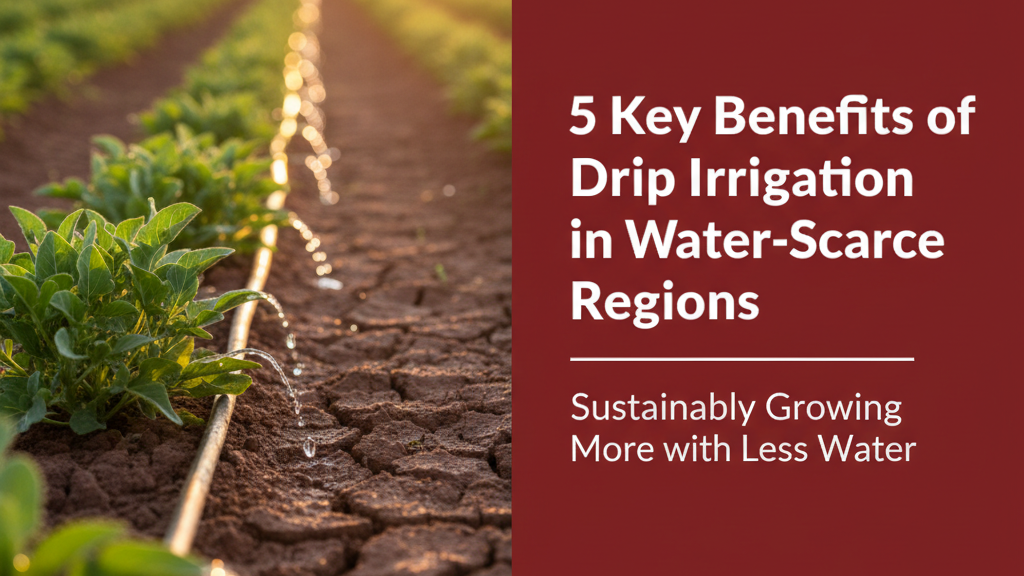Introduction to Drip Irrigation Systems
Drip irrigation delivers water directly to plant roots through a network of pipes, tubes, and emitters. Unlike traditional sprinklers that spray water over large areas, this method applies moisture precisely where it’s needed—reducing evaporation and runoff while improving plant health.
Benefits of Drip Systems in Urban Farming
For urban gardeners working with limited space and water resources, drip irrigation offers distinct advantages:
- Water efficiency: Uses 30-50% less water than conventional methods by minimising evaporation
- Targeted delivery: Prevents weed growth by avoiding water dispersion between plants
- Soil health: Maintains consistent moisture levels without causing erosion or compaction
- Space adaptation: Works equally well in raised beds, container gardens, and vertical farms
How Drip Irrigation Works
The system operates on low pressure (typically 1-2 bar), delivering water drop-by-drop through emitters placed near plant bases. A basic setup includes:
- Water source (tap/overhead tank) connected to a pressure regulator
- Mainline tubing distributing water through the garden
- Secondary drip lines with emitters positioned at each plant
- Optional timer for automated scheduling
Components of a Drip Irrigation System
| Component | Function | Material Options |
|---|---|---|
| Mainline pipe | Primary water carrier | HDPE, PVC, or LDPE |
| Drip tubing | Distributes water to plants | Flexible polyethylene |
| Emitters | Controls water flow rate | Plastic with ceramic/metal filters |
| Filters | Prevents clogging | 120-150 mesh screen |
Setting Up a Drip System in Your Home Garden
Follow these steps for a functional DIY installation:
- Map your garden layout, noting plant spacing and water needs
- Connect the mainline to your water source with a pressure regulator
- Lay drip tubing along planting rows, securing with ground stakes
- Install emitters at appropriate intervals (15-30cm for most vegetables)
- Flush the system before first use to remove debris
Choosing the Right Drip Emitters
Emitter selection depends on plant requirements:
- Fixed flow (2-4 LPH): Ideal for small herbs and flowers
- Adjustable flow (0-20 LPH): Suitable for variable plant sizes
- Micro-sprayers: Better for dense plantings like ground cover
In hard water areas, choose pressure-compensating emitters to maintain consistent flow despite mineral buildup.
Calculating Water Requirements
Estimate daily needs using this formula:
(Plant water requirement in mm/day) × (Drip area in m²) × 0.8 (efficiency factor) = Litres/day
Most vegetables need 5-7mm daily during peak growth. For a 2m² tomato patch: 6mm × 2 × 0.8 = 9.6 litres/day.
Maintenance Tips for Drip Irrigation
- Inspect filters monthly during monsoon season
- Flush lines every 3 months to prevent algae and sediment buildup
- Check emitter flow rates seasonally—clogged emitters may need vinegar soaking
- Drain systems before winter in colder regions to prevent pipe damage
Common Challenges and Solutions
| Issue | Likely Cause | Solution |
|---|---|---|
| Uneven watering | Pressure variation | Install pressure-compensating emitters |
| Clogged emitters | Sediment/algae | Use finer filters (150 mesh) and periodic flushing |
| Tube damage | Rodents/UV exposure | Use UV-stabilised tubing and physical barriers |
Environmental Impact of Drip Irrigation
Compared to flood irrigation, drip systems demonstrate measurable benefits:
- Reduces water extraction from stressed aquifers
- Minimises fertiliser runoff through targeted application
- Lowers energy use by operating at low pressure
- Extends growing seasons in water-scarce regions
Conclusion: Is Drip Irrigation Right for You?
Drip systems prove particularly valuable for urban gardeners prioritising water conservation and plant health. While initial setup requires planning, the long-term savings in water and labour often justify the investment—especially in India’s variable climate conditions.




